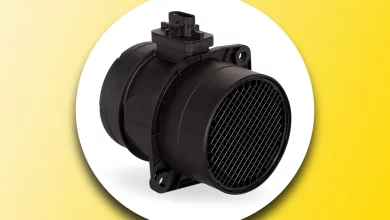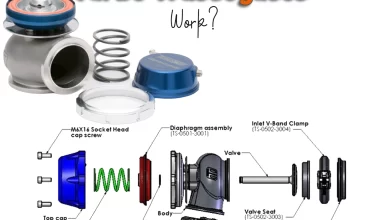Engine
-

How do maf sensors work?
In the intricate world of automotive engineering, one of the unsung heroes responsible for your car's optimal performance is the Mass Airflow Sensor, commonly known as the MAF sensor. This unassuming device plays a pivotal role in ensuring that your engine breathes just the right amount of air, a critical factor in maintaining efficiency and power. So, how do MAF sensors work their magic? At their core, MAF sensors are all about measuring the mass of incoming air. Whether you're cruising down the highway or idling in traffic, these sensors are diligently at work, providing crucial data to your vehicle's engine control unit (ECU). This data allows the ECU to make real-time adjustments to the air-fuel mixture, a process that's fundamental to engine performance and fuel efficiency. There are various types of MAF sensors, including the hot wire and vane meter sensors, each with its unique approach to measuring airflow. Hot wire sensors rely on changes in the electrical resistance of a heated wire as air flows over it, while vane meter sensors use the rotation of a vane or paddlewheel to gauge airflow. In our comprehensive exploration of MAF sensors, we'll delve into the nitty-gritty details of their operation,…
-

How Do Knock Sensors Work?
Knock sensors, often overlooked but undeniably crucial, serve as the guardians of your vehicle's engine, ensuring its longevity and efficiency. These unassuming devices, strategically positioned within the engine bay, possess a remarkable ability to detect the subtlest hints of engine knock or detonation. But what exactly is engine knock, and how do knock sensors work to counteract it? Engine knock, or knocking, occurs when the air-fuel mixture inside an engine's cylinder ignites prematurely or unevenly. This untimely combustion generates a distinct knocking sound, and left unchecked, it can lead to catastrophic engine damage. This is where knock sensors step into action. Knock sensors employ advanced technology, typically utilizing piezoelectric crystals or resonant frequency circuits. When your engine operates, these sensors constantly monitor vibrations and sounds. The moment they detect any deviation from the harmonious rhythm of combustion, they send signals to the engine control unit (ECU), the brain of your vehicle. In response, the ECU makes swift adjustments, fine-tuning critical parameters like ignition timing and fuel delivery. These adjustments ensure that the air-fuel mixture ignites precisely when it should, thwarting engine knock and preserving your engine's health. So, the next time you start your car, take a moment to appreciate…
-

How Do Turbo Wastegates Work?
A turbocharger, that small but mighty device under your car's hood, has an unsung hero that plays a crucial role in enhancing engine performance - the turbo wastegate. Ever wondered how your engine maintains the perfect balance between power and safety? This guide will unravel the mysteries behind this vital component and explain precisely how a turbo wastegate works. At its core, a turbo wastegate is a pressure relief valve, working tirelessly to regulate the boost pressure generated by your turbocharger. It's an intricate system comprising several key components, each with a specific role. The actuator, often likened to the wastegate's brain, responds to pressure differentials, adjusting the wastegate valve's position. This valve, in turn, controls the flow of exhaust gases that drive the turbocharger's turbine, dictating the amount of air pushed into the engine. But why is this control so crucial? Well, without it, your engine would be at risk of overboosting, a scenario where excessive air pressure can strain and potentially damage vital engine components. The wastegate's meticulous management ensures that the boost pressure stays within safe limits. Furthermore, the wastegate doesn't just prevent damage; it's an integral part of optimizing engine performance. By fine-tuning the boost pressure,…